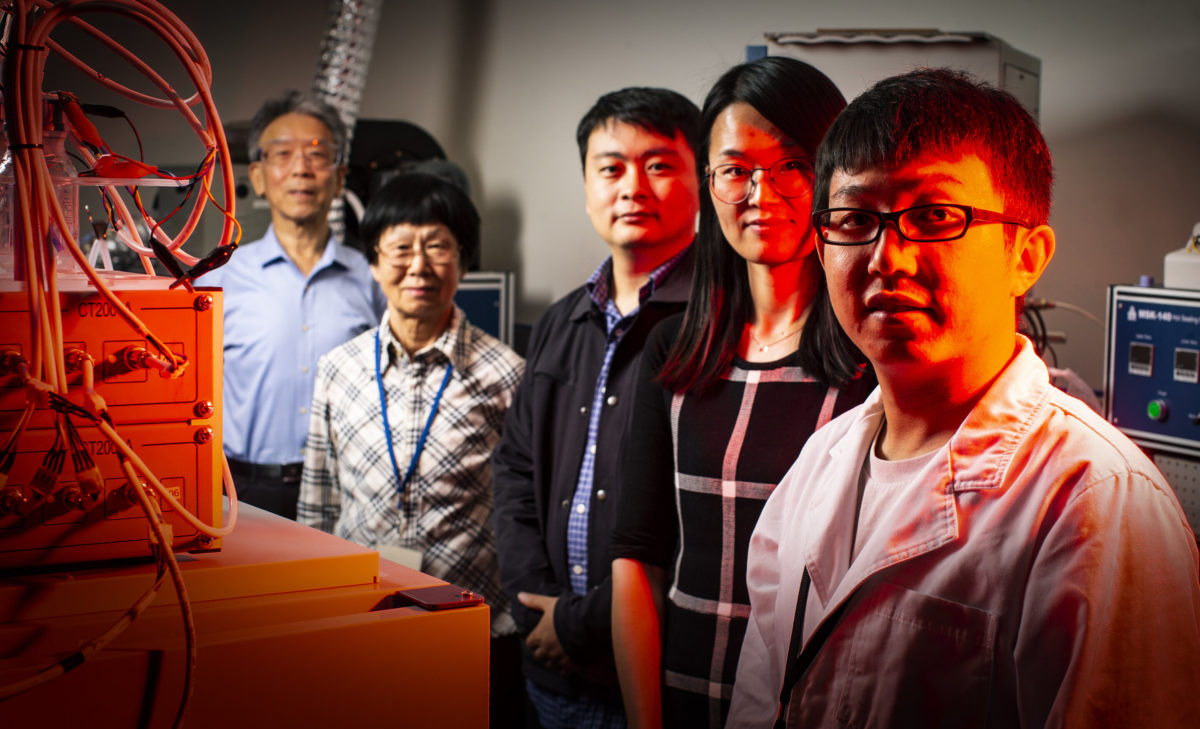Room-temperature sodium-sulfur batteries have been recognized as an attractive proposition for next-generation energy storage, which will be required to meet increasing demands as the energy transition accelerates. However, the technology has thus far suffered from rapid capacity fading and low reversible capacity.
In a breakthrough made by University of Wollongong researchers, the problem was overcome by creating a nanomaterial – nickel sulphide nanocrystals implanted in nitrogen-doped porous carbon nanotubes – which exhibited excellent performance when used as cathodes.
The research results published in Nature Communications hold a promise of a superior room-temperature sodium-sulfur battery with higher energy density and long charge-discharge cycle life. As such, the technology would provide a low-cost and competitive alternative for large-scale stationary storage, the researchers predict.
“For now, the actual energy densities of sodium-sulfur batteries are a far cry from the theoretical values,” said Yunxiao Wang from University of Wollongong’s Institute for Superconducting and Electronic Materials (ISEM). “Their practical applications are mainly impeded by the problematic sulfur cathode due to its insulating nature and the slow redox kinetics, as well as the dissolution and migration of the reaction intermediates.”
The research team has been working on room-temperature sodium-sulfur batteries since 2016 and experimented with a number of different materials before their breakthrough. But the new nanomaterial is viewed as a game-changer, since it has not only delivered superior performance, but is also suited to large-scale production and therefore commercialisation.
“We tried many carbon hosts, and finally found the nickel sulfide nanocrystals implanted nitrogen-doped porous carbon nanotubes as a multifunctional sulfur host,” PhD candidate Mr Zichao Yan said. “We found that the continuous carbon backbone inside the host can provide short ion diffusion paths and a fast transfer rate. And the nitrogen-doping sites and the nickel sulfide polar surface are capable of enhancing the adsorption energy of polysulfides, leading to strong catalytic activity towards polysulfide oxidation.”
The next step, Associate Professor Shulei Chou said, was to scale up production of the material. “All our previous papers, including this one, were focused on how to find an efficient host for lab-scale research. The next step for our group is to bring sodium-sulfur batteries from lab-scale to industry-scale, and make a real application for this battery system.”
In a separate commercial trial of novel battery technologies led by University of Wollongong’s ISEM, a rollout of sodium-ion batteries was initiated last year for Sydney Water’s sewage pumping stations located just off the iconic Bondi Beach. The ARENA-funded renewable energy generation system features 6 kW of solar panels, an energy management system and 30 kWh of sodium-ion battery packs, which were to replace a temporary lithium-ion battery pack.
Earlier last year, researchers at University of Wollongong’s ISEM made a breakthrough in sodium-ion battery design, developing a material which was not sensitive to air and exhibited strong cycling stability.
This content is protected by copyright and may not be reused. If you want to cooperate with us and would like to reuse some of our content, please contact: editors@pv-magazine.com.









By submitting this form you agree to pv magazine using your data for the purposes of publishing your comment.
Your personal data will only be disclosed or otherwise transmitted to third parties for the purposes of spam filtering or if this is necessary for technical maintenance of the website. Any other transfer to third parties will not take place unless this is justified on the basis of applicable data protection regulations or if pv magazine is legally obliged to do so.
You may revoke this consent at any time with effect for the future, in which case your personal data will be deleted immediately. Otherwise, your data will be deleted if pv magazine has processed your request or the purpose of data storage is fulfilled.
Further information on data privacy can be found in our Data Protection Policy.